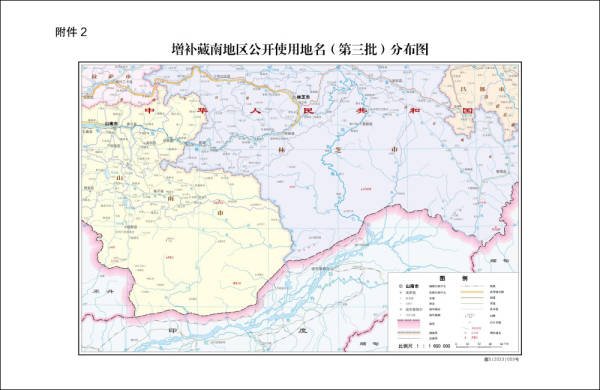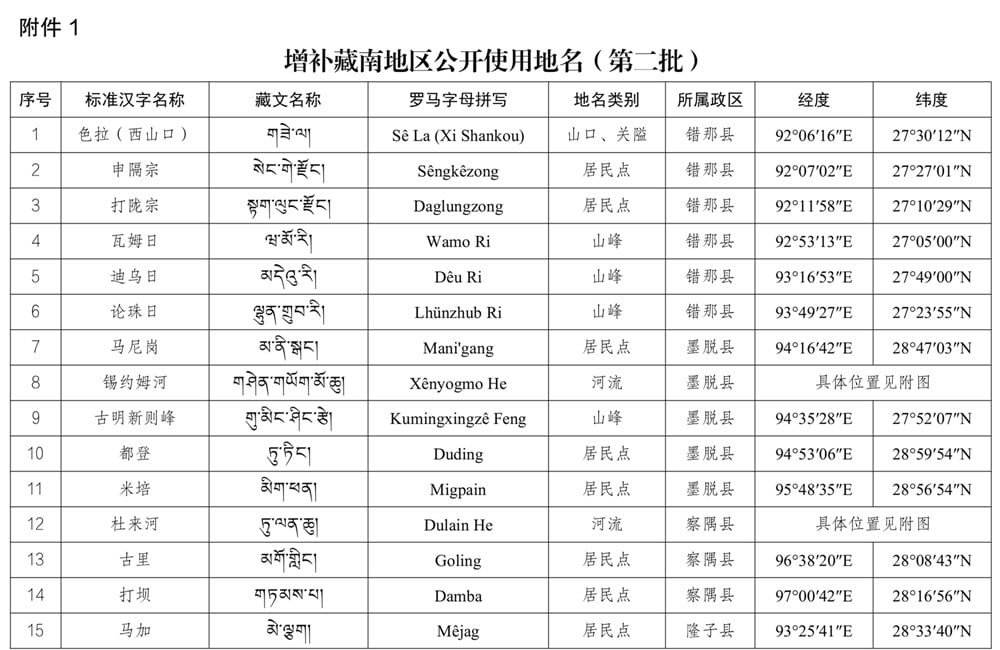This article is the copied from the Government website. Review it before further comments. It represents only official statements,
A Recent Update from the Ministry of Civil Affairs
On April 2nd, the Ministry of Civil Affairs’ official website announced a significant update. Following the State Council’s guidelines on place naming, the ministry, in collaboration with relevant departments, has standardized some place names in China’s southern Tibet region. They have officially released the third batch of additional names for public use in this area, totaling 11 new names.
At first glance, the standardization of place names might appear as a mere administrative task. However, it goes beyond simplifying navigation or enhancing administrative efficiency. Names hold power—they can affirm presence, claim authority, and shape perceptions of legitimacy and belonging. By renaming or formalizing names in Tibet, the act becomes a statement of sovereignty and control, drawing lines not just on maps but in the minds and narratives of people both within and outside China.
Source of news: People newsletter


Exploring the Third Batch of Names
This latest release includes a variety of geographical features such as areas, residential points, mountains, and rivers. These are located within Shannan City’s Cona County and Lhünzê County, as well as Nyingchi City’s Medog County and Zayü County in the Tibet Autonomous Region.
A Brief History of Naming
This initiative isn’t new. The Ministry of Civil Affairs first introduced a set of place names for this region on April 13, 2017, and followed up with a second batch on December 29, 2021. The first batch introduced six names, while the second batch added fifteen more to the list.


Simplifying and Standardizing Names
These efforts aim to standardize the nomenclature of geographical features in southern Tibet, ensuring consistency and ease of use. By formalizing these names, the Ministry of Civil Affairs enhances the accessibility and understanding of this significant region’s geography. This move not only aids in administrative management but also enriches the cultural and historical understanding of the area.
In a clear, straightforward approach, this announcement marks another step towards the organized documentation and public acknowledgment of place names in Tibet’s southern region. With each batch, the landscape of Tibet becomes more navigable and known to the public, fostering a deeper connection between the land and its people.
Looking Ahead
As the discussion around south Tibet’s new place names unfolds, it serves as a reminder of the intricate relationship between geography and politics. While the immediate impact may be felt in maps and signposts, the deeper reverberations will continue to influence cultural narratives, diplomatic relations, and the ongoing discourse on sovereignty and identity.
















